This Substack is about life in Việt Nam from the viewpoint of a 10-year expat who spent his first 60 years in a low-context culture.
Tapping the ❤️ at the top or bottom of the page, or leaving a comment will let me know your thoughts and feelings, which are important and valuable to me. Doing so also helps others find this article. Thank you.
This is the seventh in a series about my experiences building a bespoke house in Đà Lạt (Dalat), which sits at about 1500m (~4900ft) altitude in the Central Highlands.
Previous posts include:
In part 6, I went on at great length about how the contractor did whatever tf he felt like or my father-in-law (FIL) told him to do UNTIL he realized that he wouldn’t get paid unless he followed the drawings. Mostly.
Now that that was “settled”, we could get on to finishing the house.
The Hidden Parts
Since the house is built of brick walls sitting on concrete slabs, there is no recess in the walls for electrical conduit or plumbing pipes as there is in a stick house with drywall over studs.
This means they get to cut channels in the bricks to run everything.
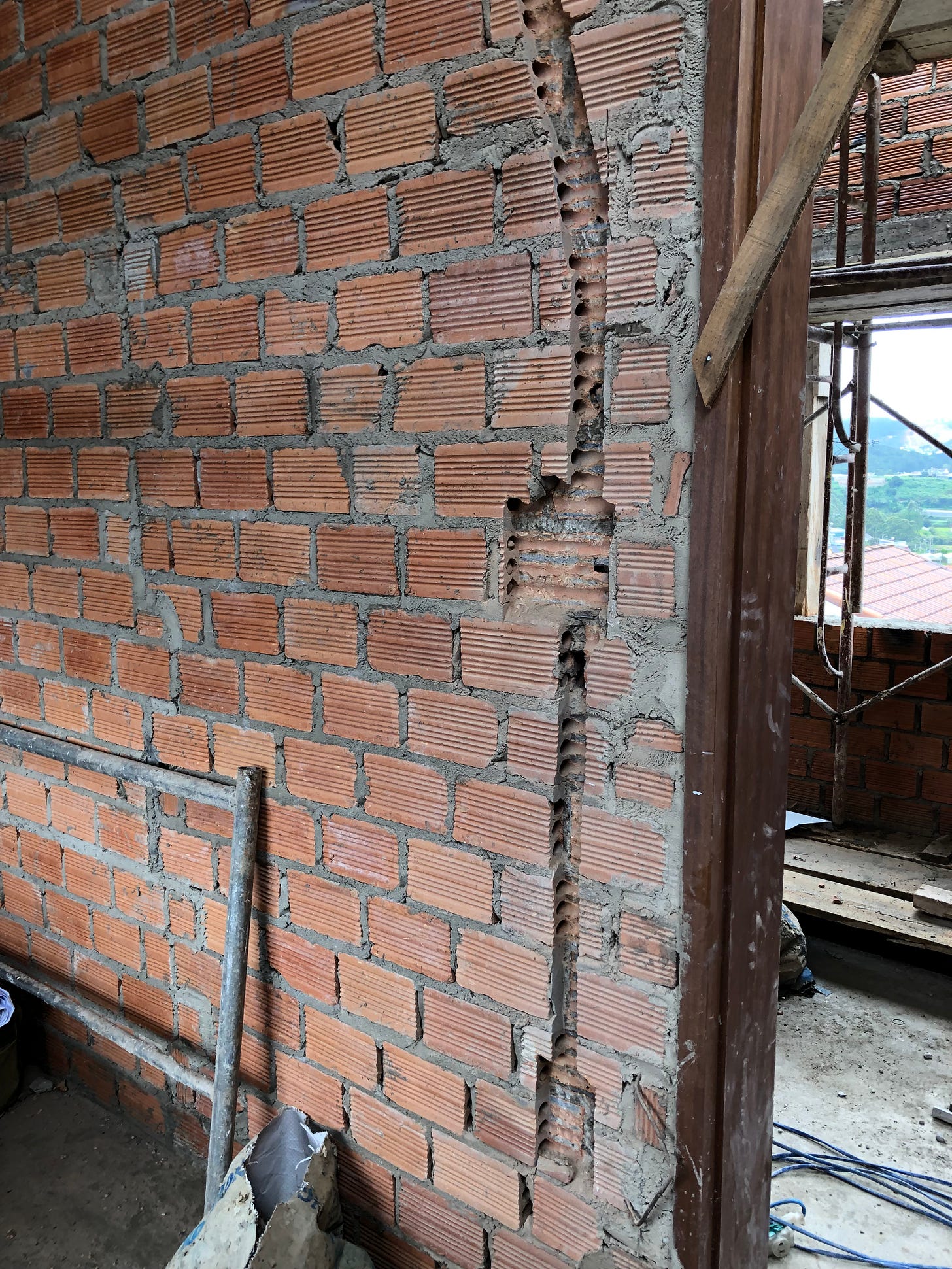
Then they run the conduit and add the boxes,
before filling in the remaining space with concrete.
The entire wall is then covered in concrete, which is (mostly) smoothed out before sealer, primer, and paint are applied.

Exterior Finish
In a low-budget build, the paint is often applied directly on the concrete, though that is a bad idea long-term.

Note the side wall of the neighbor’s house in the photo below. Rather than use sealer and paint on the concrete-covered side walls, it’s much less expensive to keeping the underlying brick or concrete relatively “dry” by covering it with corrugated metal sheeting. Unfortunately, this does NOT protect against humidity and moisture seeps through. It also looks like crap.
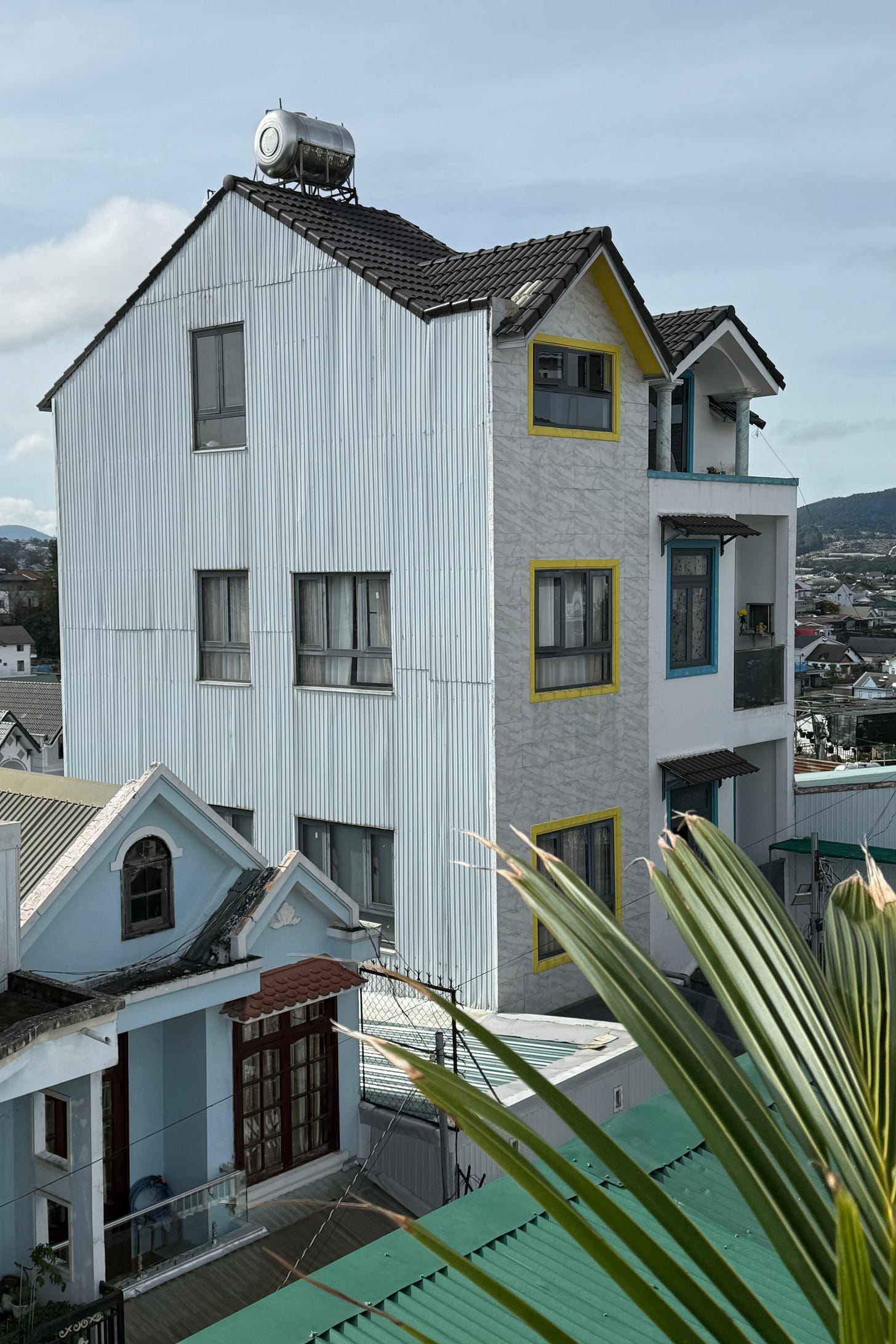
Some people spend a lot of money building a nice house and then completely ignore sealing/priming/painting or even corrugated sheeting on the side walls in favor of the “natural” look.
I’ve never been inside this place, but knowing that there are only two thin layers of cement and two hole-filled bricks between the outside and inside wall surfaces, I’d wager my house that they are constantly battling black mold all over the inside surfaces of that wall. Or, more likely, they do what most people do and ignore it.
As I’ve written previously, I got constant pushback from the architect, the builder, and my FIL about all the money I was wasting on “unnecessary” things like insulation, sealer/primer/paint, a grounded electrical system, high-quality cabinets and fixtures, and more.
They even told me that raising the toilet in my bathroom to alleviate my knee pain and discomfort while using it was a frivolous waste of money. My answer was, “It’s MY money and I want it.” I’m thankful every day that I did it.
Build Quality (or lack thereof)
While we’re on the topic of water, our rainy season is May through mid-November. Even though the workmen did their “best”, constructing the garage roof,
we had issues with leaks
that took EIGHT attempts by the builder before the garage roof didn’t leak.
Note: The “pit” in the garage floor now holds a flush-mounted 1.5m x 2m hydraulic lift to allow me to more easily work on my sidecar rig.
We also had multiple leaks in the roof of the house.
After TEN unsuccessful attempts by the builder to stop the multiple leaks, La called one of her friends who fixed all of them in less than two hours (with silicone, of course) and charged us about US$18 including materials.
In these cases, I always give them “a tip” that I say is for their children. No matter how many times a Vietnamese turns down a gratuity for what they think is just doing their job, as soon as you say it’s for their kids, they take it with a smile. This is now my opening gambit.
Before (and after) we moved in, we had issues with the windows leaking. It started out very bad and eventually they got them down to just bad.
The window guy tried a lot of different things that didn’t work, including adding deflectors.
They ended up shortening the outside pull-down window screen frames a centimeter to allow water to drain instead of pool on the sills. What’s that saying about how the best fix is often the most simple?
Once the window guy finally figured it out and fixed it, he said to me,
If I had known in the beginning how difficult you are (i.e. that you would expect the windows’ glass to be without defect and the windows themselves not leak), I would not have taken the job.
I replied that if I’d known he was going to try to get away with shoddy work, I wouldn’t have hired him, even though he is my wife’s friend.
We both laughed and shook hands. Now, four years later, he’s about to install a glass floor for us. More on that in a future “Building a House…”.
One last water-related item…
Custom Bathtub Holder
My daughter H loves taking baths, so when we designed the house, it had to include a tub in her bathroom. Since everything is bricks and concrete, the masons made a custom enclosure for her tub.
She loves it!
And, so far, it doesn’t leak.




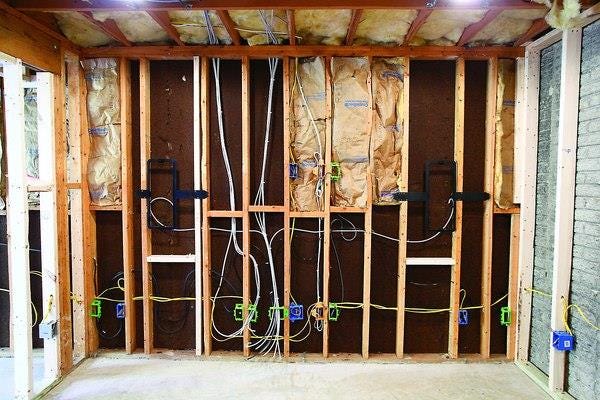
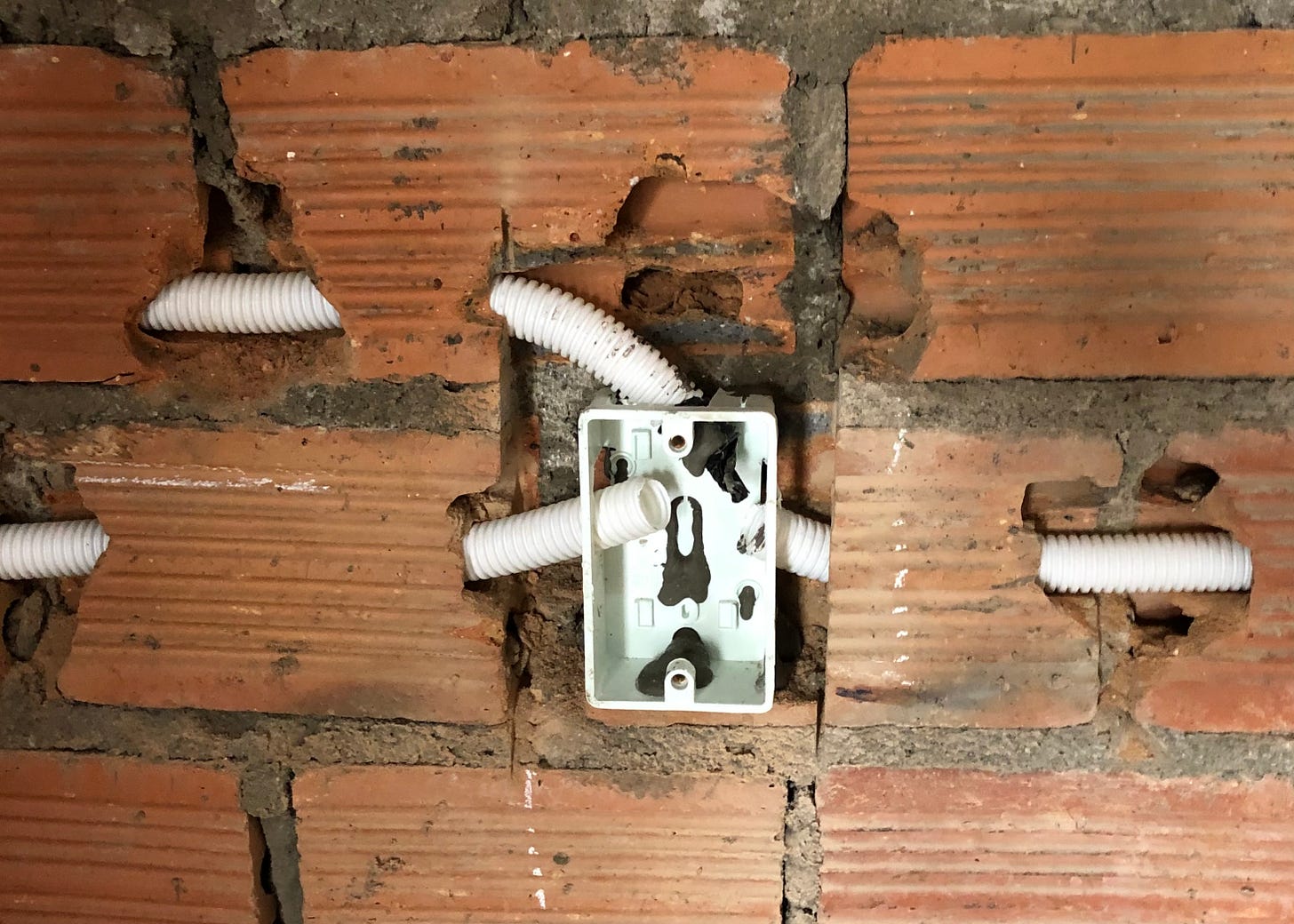
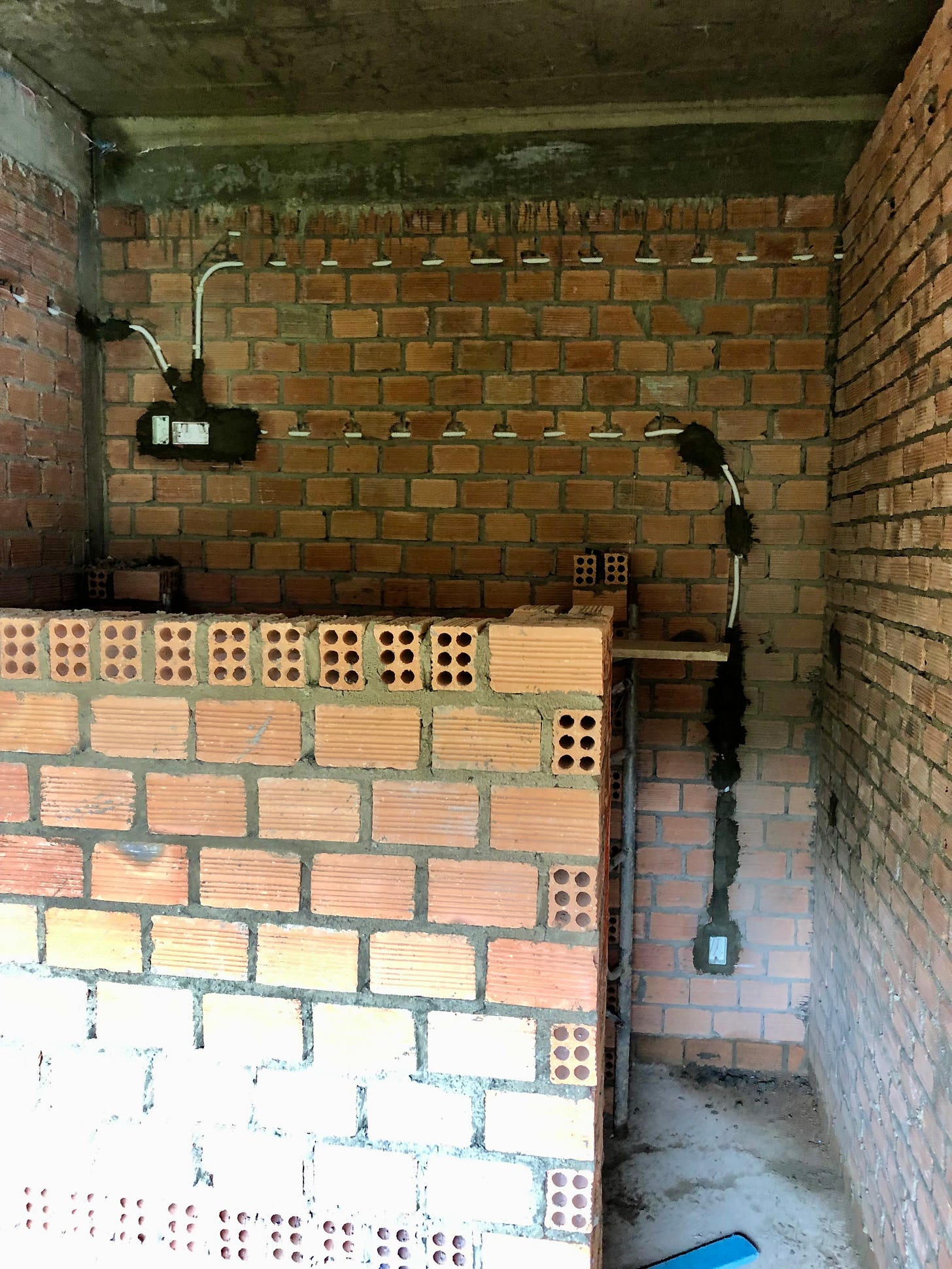
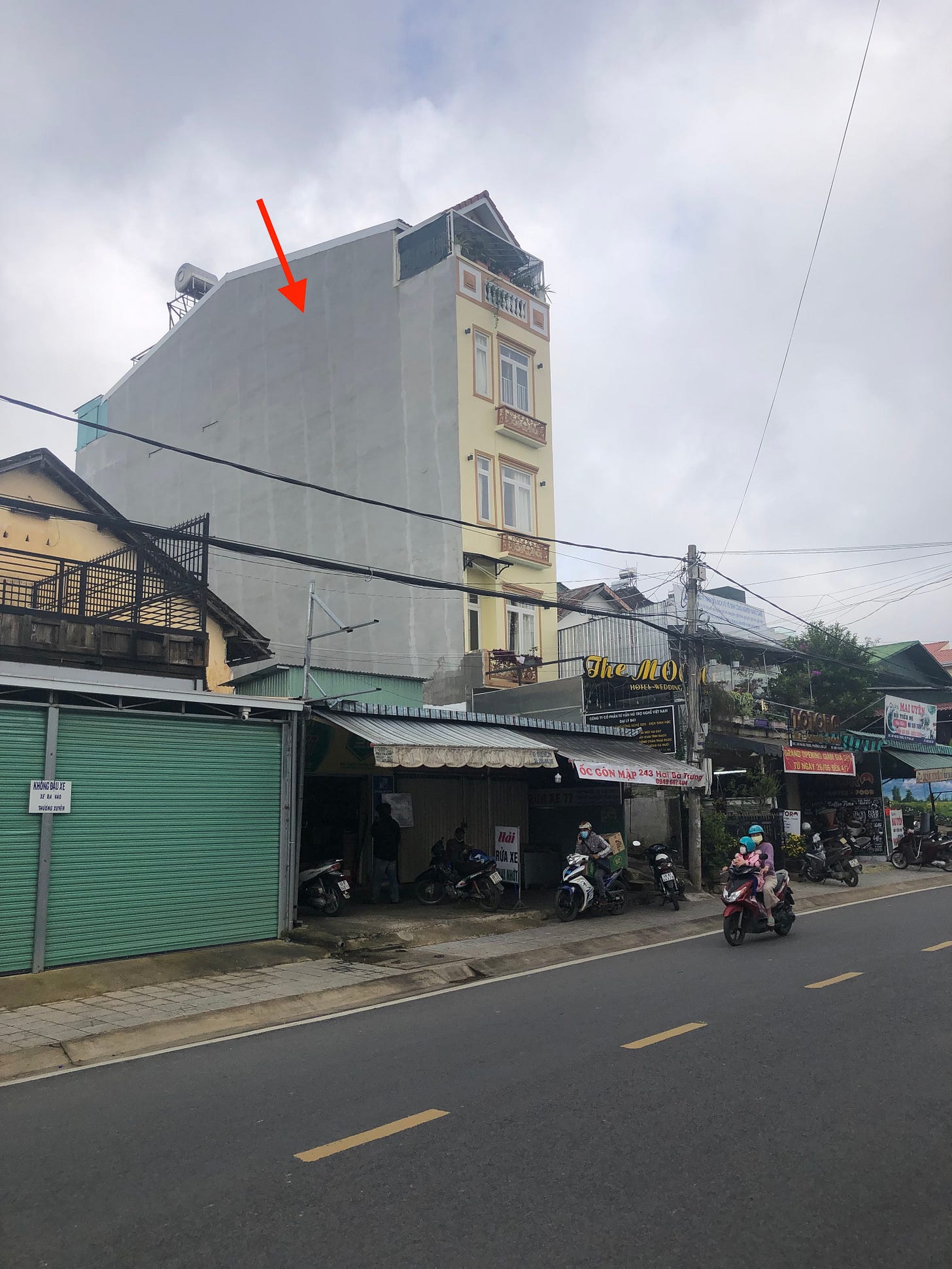

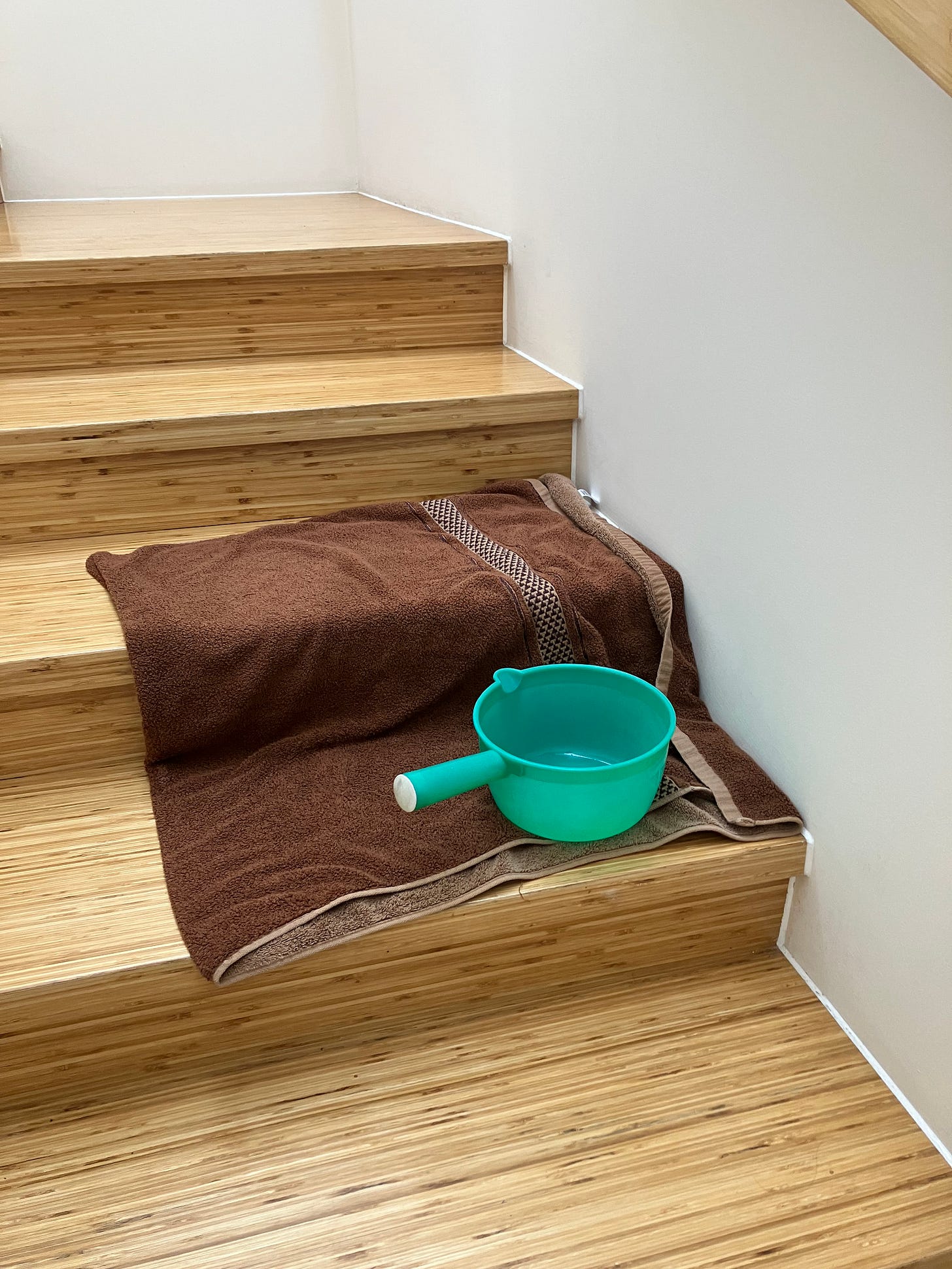




Home of debris, land of the slave.
Whatchoo tawkin' bout, Willis?